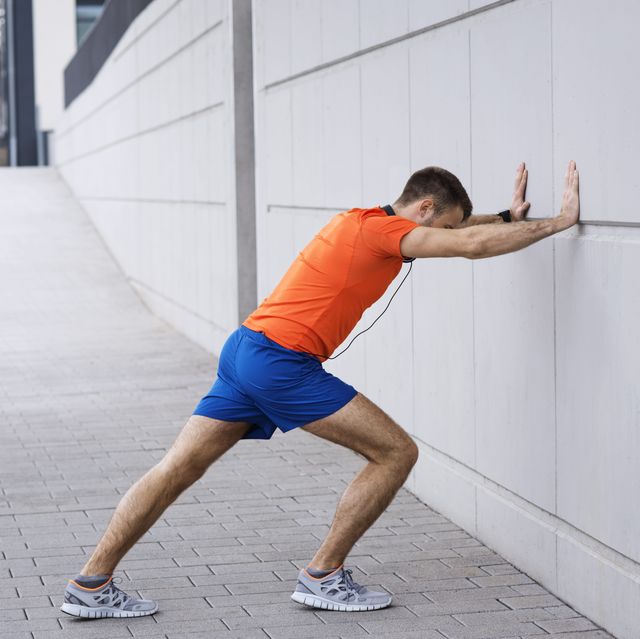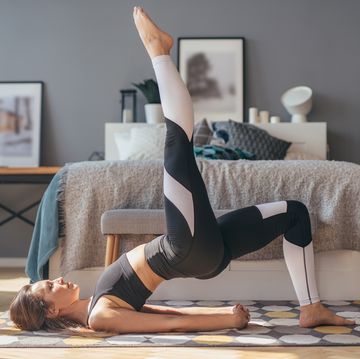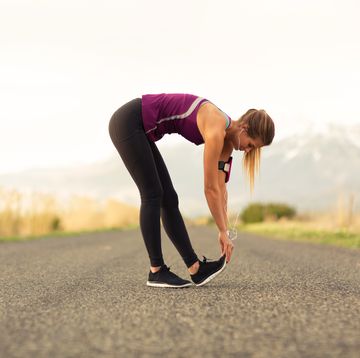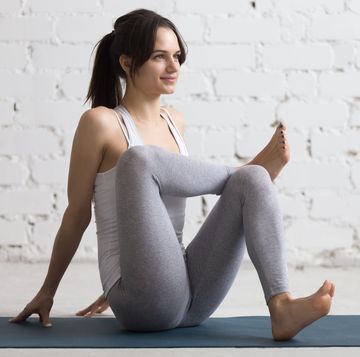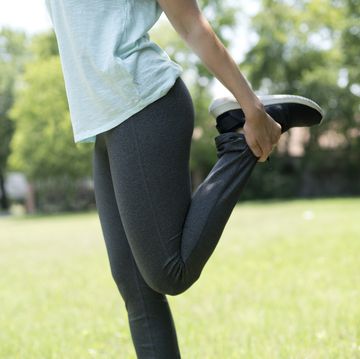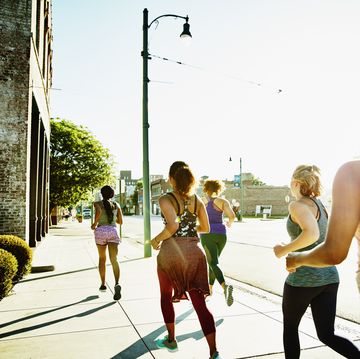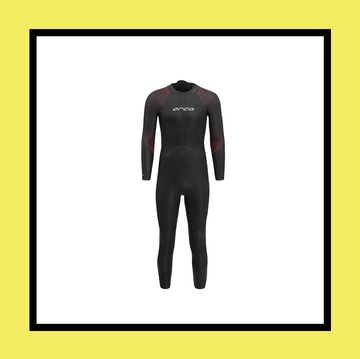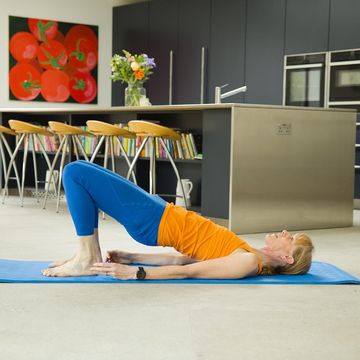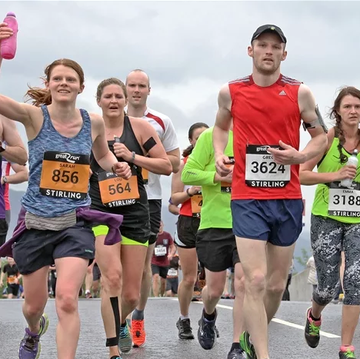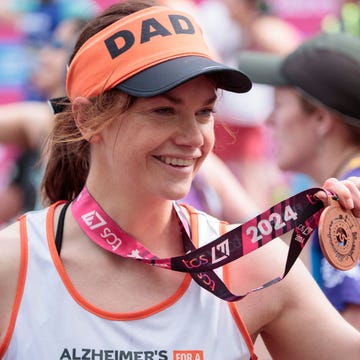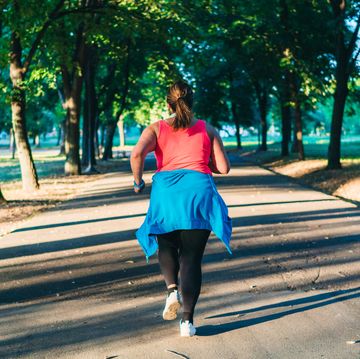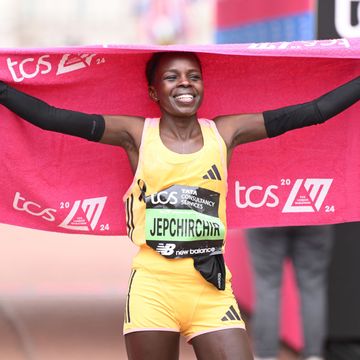If you're the type of runner who thinks that in order to become a better, faster, stronger runner, all you need to do is run more, you need to think again.
While 'junk miles' may appear to make you fitter, more running doesn't necessarily equal stronger muscles. This is why it's so important to stretch and strength train – to elongate our muscle fibres, increase our range of movement and reduce the risk of injury.
As runners, there are certain muscle groups that deliver power and bear the load – including those in our posterior chain (calves, hamstrings, glutes, for example). Yet calves often go forgotten.
Why do runners need to strengthen their calves?
'The calf muscles are essential to the control of foot movement (dorsiflexion, plantarflexion) for walking and running,' explains Liz Tough, injury rehabilitation therapist and owner of physio and wellbeing clinic Body First UK. 'The strength of the calf muscles will determine your gait and ability to be able to run short (sprinters) or long (marathon) distances and will also determine at what pace you are able to run.'
Essentially, think of the lower leg as the driving force for your running speed. Stronger calves = faster speeds.
'Calf muscles also need strengthening as they connect directly to the achilles tendon, which often creates pain and injuries for runners,' adds Tough. 'The strength of the calves is often underestimated as a priority to running pain-free.'
So even though our calf muscles help to take pressure off the ankle and knee joints (and take most of the impact of running), a lot of runners avoid strengthening their calves. Why? 'A lot of the time quadriceps and hamstrings take more focus because they are the bigger muscle groups, therefore seen as more important,' says Tough. “However, most times the pain and discomfort will start in the calves, which can precede a quad or hamstring issue.”
And there also seems to be a link between the calves and the glutes, she says. 'Runners require both if they are to be successful in their running. Glutes can be seen as the engine and are needed in order to propel ourselves forward, whereas the calves can be seen as the steering wheel. One cannot be successful without the other.'
So, can calf stretching prevent calf strain or tear?
The short answer: yes. 'If the muscles – or indeed all of the soft tissues – are too tight, lack range of movement, lack suppleness or lack flexibility and the soft tissues don’t move like a consultina or move freely, they can pull on the tendons which are attached to the bone,' says Tough. 'Without flexibility or suppleness, it is like tugging on a taught rope, where frays can happen and then calf tears.'
And should your stretch before or after a run?
Both are essential – but 'it's vitally important to know which type of stretching is better for pre or post-runs,'' says Tough.
Before a run, stick to dynamic stretches to really warm up the muscles and lengthen them. 'This will help prevent injury and enhance performance,” she says. “I’m not a fan of stretching cold muscles and I advise my runners to perform static stretching post run which can usually mean lengthening and realigning the soft tissues which have become short and tight during the run.'
Her key advice? Remember to breathe. 'A lot of people tend to hold their breath while stretching, but this can cause tension in the muscles and make stretching difficult and therefore not be able to get the full stretch.'
Keep reading for the best calf stretches to help strengthen – and lengthen – your lower legs...
The best calf stretches for runners
1. Calf raises
Apparently, Steve Cram (British retired track and field athlete) used to do 500 of these every day as a young athlete – and he broke the world record for the mile more than once.
- Stand on one leg with your hands against the wall for balance.
- Lift up onto your tiptoes and lower down slowly.
- Repeat for 3-5 sets of 15-20 reps on each side.
2. Eccentric calf raises
Once you've mastered the single calf raise, try an eccentric calf raise to help build strength.
- Place a step or a box on the floor and stand on the very edge, so your heels are hanging off the end.
- Lift up your heels, raise up both feet at a normal tempo, and then lower down really slowly and as low as your heels can go.
- Repeat for 3-5 sets of 15-20 reps.
3. Calf raise to stretch
This is the calf version of a 'walking lunge' and great for warm-ups – calf raise, step forwards and land in a stretch position, repeat.
- Resting your hands on your hips, balance on one leg, calf raise, then step forwards and bend the front knee to get a calf stretch on the rear leg.
- Move your hands to the front knee as you land.
- Step up onto the front leg into a single-leg calf raise and then step through to stretch.
- Repeat for 10-20 reps on each side.
4. Standing calf stretch
The easiest way to feel a stretch through the back of your legs is with a simple standing calf stretch. Either hold onto a wall or the back of a chair.
- Hold onto the back of a chair and take your right leg back – keeping it straight.
- Bend your left knee and lean into your left leg until you find a stretch along the back of your calf.
- Hold for 30 seconds, then switch legs.
5. Seated calf stretch
For this stretch, you ideally need a resistance band – but if you don't own one, try using a tea towel instead.
- Sit on the floor with one leg straight out in front of you, and the other bent, then wrap the resistance band around the bottom of the foot with the straight leg.
- Hold one end of the band in each hand, and pull the band toward you to flex your foot, and stretch your calf.
- Hold for 30 seconds, then switch sides and repeat on the other foot.
